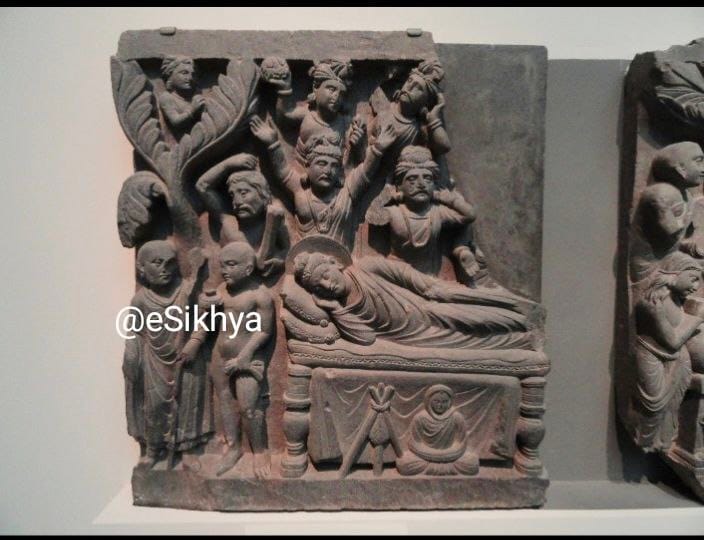Sramanic Tradditions in India
The Sramaṇic Traditions in India refer to a range of heterodox philosophical and religious movements that emerged as a response to and in critique of the orthodox Vedic Brahmanic traditions.
The term “Sramaṇa” itself means “one who labors, toils, or exerts themselves,” and is often associated with ascetics, renunciants, and those seeking liberation (moksha) through spiritual practices outside the established Vedic norms. The most prominent Śramaṇic traditions include Buddhism, Jainism, and the Ājīvika sect, among others.
Key Characteristics of Sramaṇic Traditions
- Rejection of Vedic Authority
- Śramaṇic traditions generally reject the authority of the Vedas and the ritualistic practices prescribed therein. They often critique the caste system and the social hierarchies upheld by Brahmanism.
- Asceticism and Renunciation
- These traditions emphasize ascetic practices and renunciation as means to attain spiritual liberation. Śramaṇas often lead lives of severe austerity, self-discipline, and meditation.
- Karma and Rebirth
- While Śramaṇic traditions share with Brahmanism the concepts of karma and rebirth, their interpretations and emphasis on these concepts differ. They stress personal responsibility and ethical conduct as key to breaking the cycle of rebirth.
- Focus on Personal Experience
- Śramaṇic traditions prioritize personal experience, direct knowledge (pratyakṣa), and inner realization over scriptural authority and external rituals.
Major Sramaṇic Traditions

1. Buddhism
- Founder: Siddhartha Gautama (the Buddha), who lived in the 5th century BCE.
- Core Teachings: The Four Noble Truths and the Eightfold Path, which outline the nature of suffering (dukkha) and the path to its cessation.
- Philosophy: Buddhism emphasizes impermanence (anicca), non-self (anatta), and the interconnectedness of all things (dependent origination). It encourages ethical living, meditation, and wisdom as means to achieve Nirvana, the ultimate liberation from the cycle of rebirth.
2. Jainism

- Founders: The 24 Tirthankaras, with Mahavira being the most recent and well-known, who lived in the 6th century BCE.
- Core Teachings: The three jewels of Jainism are Right Belief (samyak darshana), Right Knowledge (samyak jnana), and Right Conduct (samyak charitra).
- Philosophy: Jainism emphasizes non-violence (ahimsa) to an extreme degree, truthfulness (satya), non-stealing (asteya), chastity (brahmacharya), and non-possessiveness (aparigraha). It teaches that every soul has the potential for divinity and liberation (moksha) through ethical living and self-discipline.
3. Ajivika

- Founder: Makkhali Gosala, a contemporary of the Buddha and Mahavira.
- Core Teachings: Ājīvika philosophy is deterministic, positing that everything in life is predetermined by fate (niyati) and that human effort cannot alter one’s destiny.
- Philosophy: This tradition stresses rigorous asceticism and self-control, believing that liberation is achieved through a predetermined series of rebirths.
Influence and Legacy
- Ethical and Social Reform
- Śramaṇic traditions brought significant ethical and social reforms, challenging the rigid caste system and promoting values like non-violence, compassion, and ethical conduct. They provided alternative models for spiritual practice and social organization.
- Philosophical Contributions
- These traditions contributed rich philosophical literature, including Buddhist sutras, Jain agamas, and Ājīvika texts. Their debates and discourses with Brahmanic scholars led to a vibrant intellectual environment in ancient India.
- Spread and Cultural Impact
- Buddhism, in particular, spread widely across Asia, influencing the cultural, religious, and social landscapes of countries like Sri Lanka, Myanmar, Thailand, Tibet, China, Korea, and Japan. Jainism, while more geographically confined to India, has deeply influenced Indian culture, art, and architecture.
- Continuing Relevance
- The teachings of the Śramaṇic traditions continue to be relevant today, offering insights into ethical living, mindfulness, and spiritual liberation. Their emphasis on non-violence and compassion resonates with contemporary global movements for peace and social justice.
Conclusion
The Sramaṇic Traditions represent a rich and diverse set of religious and philosophical movements that have profoundly shaped Indian spiritual and cultural history. By challenging orthodox Brahmanism and offering alternative paths to spiritual liberation, these traditions have left an enduring legacy that continues to inspire and influence.
Share this content:



Leave a Reply